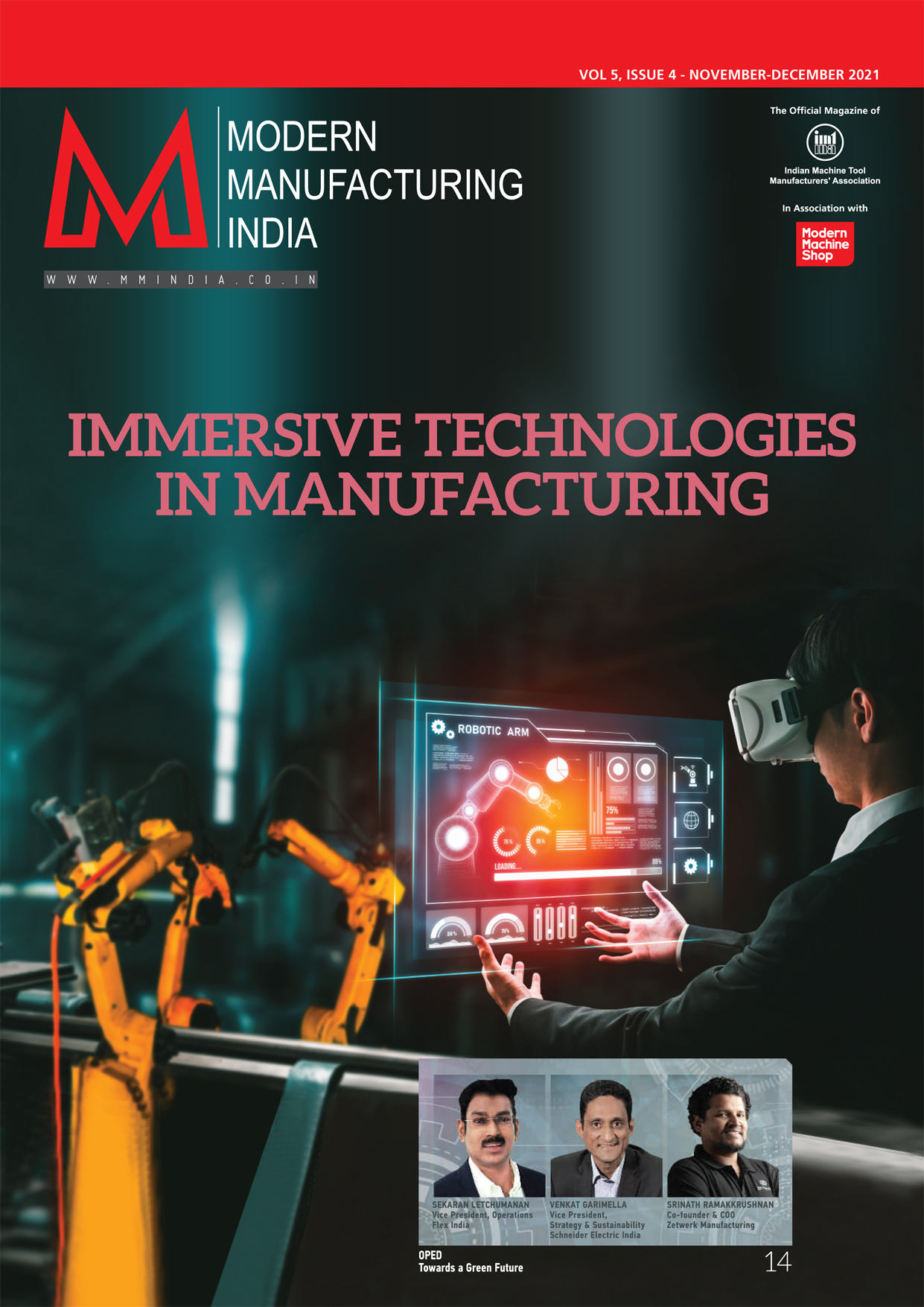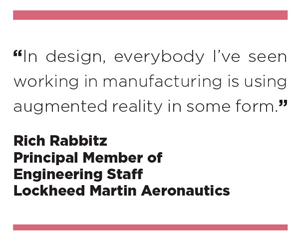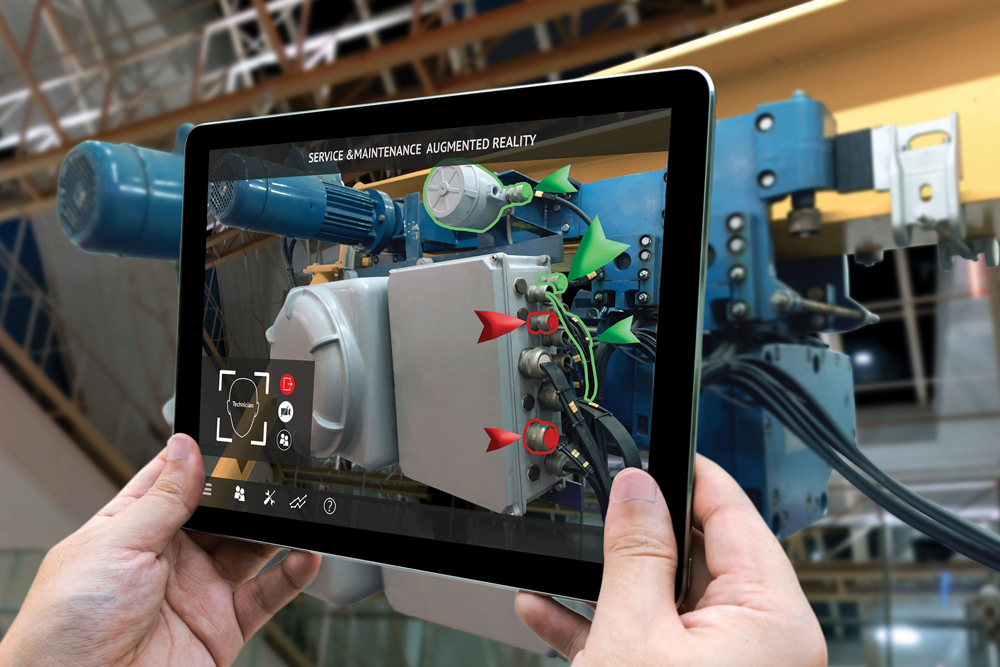Immersive Technologies in Manufacturing

Both augmented and virtual reality technologies are vastly increasing productivity and efficiencies for manufacturing companies. Their benefits are enormous - from reducing training costs and increasing knowledge retention, to getting products to market quicker, and making assembly lines and maintenance tasks vastly more efficient. There are huge opportunities available for manufacturers, and they are only going to get even more pronounced as the technologies mature.
Both virtual and augmented reality (VR and AR) technologies have a significant place in the manufacturing cycle and are bringing real benefits to businesses on a host of levels. A look at where VR and AR are currently being used by manufacturers and what the near future holds.
The first thing to note is that virtual reality is nothing new to large-scale manufacturing. Early adopter companies such as Ford, Boeing, and Lockheed Martin have been using the technology for decades. But with the relatively recent development of new, more affordable, and better performing hardware and software, the pace of adoption across the Manufacturing sector has increased rapidly.
Add to this the dawn of a suite of augmented reality devices and applications over the last few years and the scene has been set for a real revolution in immersive manufacturing.
 So, let’s have a look at where the technologies are currently having an impact and what the next phases of development, application, and usage look likely to be.
So, let’s have a look at where the technologies are currently having an impact and what the next phases of development, application, and usage look likely to be.
Many manufacturers are now seeing the benefits that both augmented and virtual reality can offer in an industrial environment. From design and visualization in premanufacture, right through to enhanced worker guidance and training during the production process. New and improved ways of using technologies across business lines are constantly being piloted and deployed across enterprises.
Design and visualization
Both VR and AR bring incredible opportunities for product design teams to shape and test their designs before any physical materials are brought into the process more accurately. Gone is the need for clay models or other expensive prototypes; creating 3D assets in VR can deliver extremely accurate representations of real-life products before a piece of metal is cut, a screw is tightened or a bolt is fixed.
With the relatively recent development of new, more affordable, and better performing hardware and software, the pace of adoption of VR across the Manufacturing sector has increased rapidly.
In industries such as Aerospace and Automotive, as design reviews take place, the opportunity to test ergonomics and safety features is hugely improved with the use of virtual environments. Most of the leading OEMs now rely heavily on (Cave Automatic Virtual Environment) CAVEs to enable their design teams to continually test and adapt designs with incredible accuracy.
The immersive nature of CAVEs and the ability to create digital twins also allow for a much more collaborative approach to design, which delivers real benefits. Elizabeth Baron, who led Advanced Visualization and VR at Ford Motor Company, said in a VR Intelligence webinar, “Collaboration is the single most beneficial thing that the executive leaders at Ford saw in the potential and promise of AR and VR. Globally connected collaborative working is what really sold the technology and has provided the biggest ROI in our company.”
AR on the assembly line
Any product manufacturing involves putting together multiple components (often hundreds or thousands) in a precise sequence as quickly as possible. This is true whether one is manufacturing televisions or car engines, and every new product requires a new set of assembly instructions.
Emerging AR applications give new life to delivering real-time instructions to workers on the front line and can provide the opportunity for guidance on all tasks and overlay images to make assembly more accurate.
Using HMDs (Head-mounted Display) or glasses, instructions and support can be always in a worker’s field of view, enabling hands-free operation and minimizing the need to check in at workstations, all of which increases productivity. Rich Rabbitz from Lockheed Martin detailed, “AR adds to the knowledge of the person working – whatever point they are working at on [the] assembly line. They have this added augmented data that they can use when they are doing their task. It’s really proving to be critical to get performance from these people.”
New workforce recruitment, training and knowledge retention
Because of the immersive and realistic nature of VR, it is well placed to enable companies to create real-life scenarios and situations that would either be impossible – or very costly – to replicate in real life.
In an industrial setting, GE is taking advantage of this. Julie Grzeda, Director of Global Leadership Programs and University Relations at General Electric, revealed that GE has started using virtual reality to improve its employer brand and showcase its tech-forward positioning with millennials and other audiences. Potential candidates at college and recruiting events can use a VR headset to experience one of the company’s new trains rushing across the plains or the technology behind its undersea oil and gas operations.
Once in place, AR and VR can speed the onboarding of new workers and improve worker productivity by offering a more immersive, on-the-job training. Glasses that project video, graphics and text can visually guide a worker through assembly or maintenance tasks.
Together with providing companies with an opportunity to showcase work to potential employees and on-board workers better, AR and VR also give them the opportunity to retain the knowledge of an aging workforce. No longer does an expert technician need to be in place to train and oversee every technician or machinist; companies can now use the AR technology to supplement their employees’ existing knowledge - potentially even with the engineering expertise delivered via telepresence.
Put simply, with the right application of augmented reality on the production floor, training becomes truly ‘on the job’. One can feed training information right on top of the actual parts and assemblies. They can start mixing the actual delivery of tasks directly with the training, which ultimately makes the equipment easier to learn and use.

Emerging AR applications give new life to delivering real-time instructions to workers on the front line and can provide the opportunity for guidance on all tasks and overlay images to make assembly more accurate.
Ongoing maintenance, error detection and quality assurance
Training and operational usage of AR and VR is the opportunity to use it for ongoing maintenance and error detection. Mark Sage from AREA said, “Newport News Shipbuilding reports a 96 percent saving in time on its inspections since it has started incorporating AR into the process.”
Other examples include Thyssenkrupp, the elevator manufacturer who provides technicians with HoloLens technology as a tool in service operations. Using HoloLens, service technicians can visualize and identify problems with elevators ahead of a job, and have remote, hands-free access to technical and expert information when on site. This has reduced the average length of Thyssenkrupp’s service calls by up to four times.
Also out in the field, GE Renewable Energy has a video on YouTube showing a worker completing wiring insertions for a wind turbine. The video compares the worker using paper instructions versus an AR headset. The technician sees an immediate 34.5 percent productivity improvement.
Back in manufacturing plants, the equipment, machinery, and components, all being used to manufacture products, can also get a helping hand from augmented reality. Important maintenance procedures can be made much easier and more accurate, which means the status of equipment can also be assessed in far shorter timeframes, saving a significant cost.
Once in place, AR and VR can speed the onboarding of new workers and improve worker productivity by offering a more immersive, on-the-job training. Glasses that project video, graphics and text can visually guide a worker through assembly or maintenance tasks.
The monitoring of incoming component parts and outgoing products has traditionally been done by means of drawings or simple checklists, which require time and effort to compile. But with the new AR applications, preset CAD models can be accurately overlaid onto a real-time video image. When placed over a physical component, this enables a direct comparison of the component with the plan or CAD data and any discrepancies can be recognized instantly.
In addition to the pure geometry of the part or assembly, the inspector can also have all other necessary information on the device, such as ISO standards, core data, metadata etc., so no other medium is needed for the inspection process. This all makes it possible to carry out incoming goods inspections more quickly and easily than ever before.




 Facebook
Facebook.png) Twitter
Twitter Linkedin
Linkedin Subscribe
Subscribe